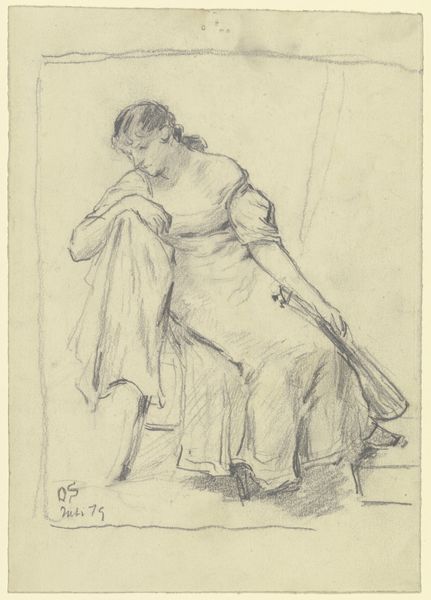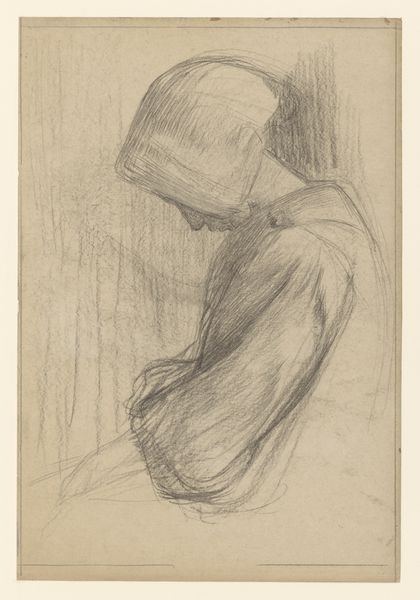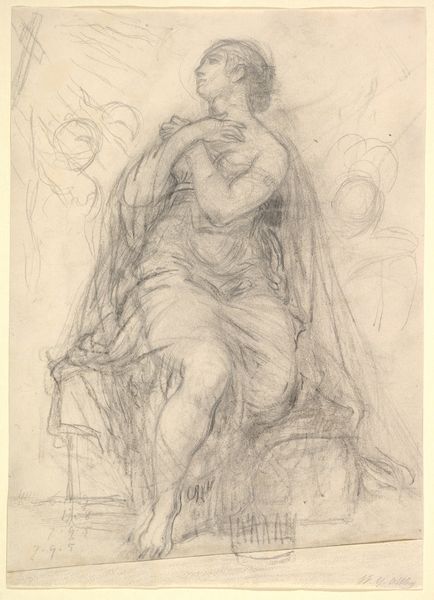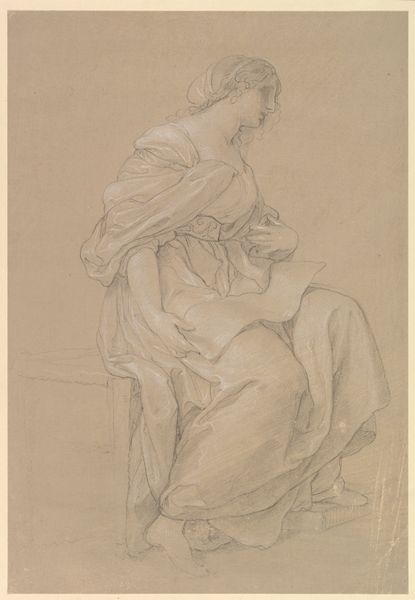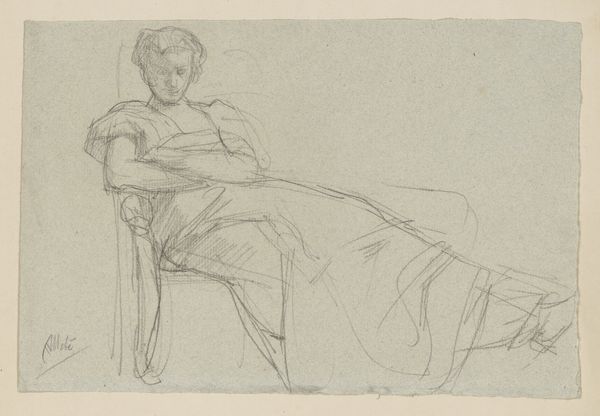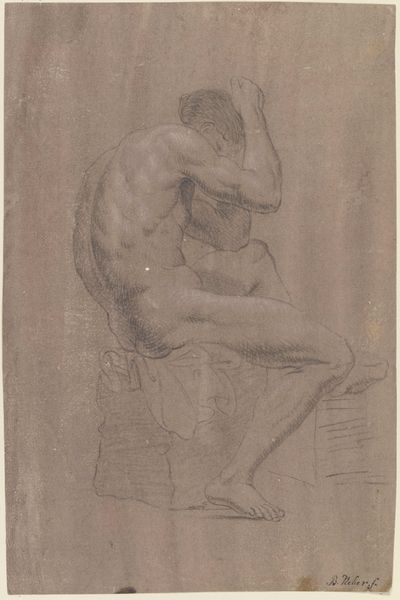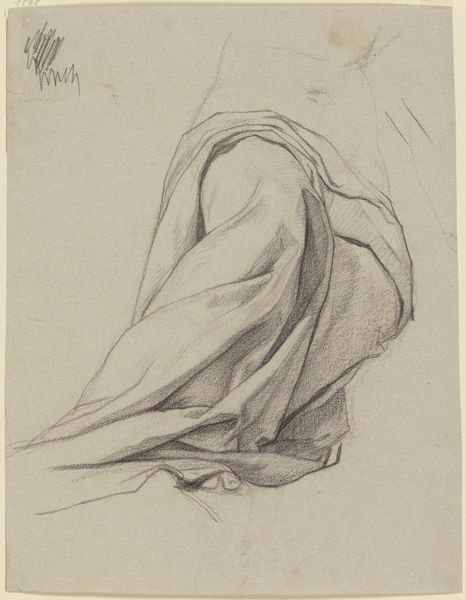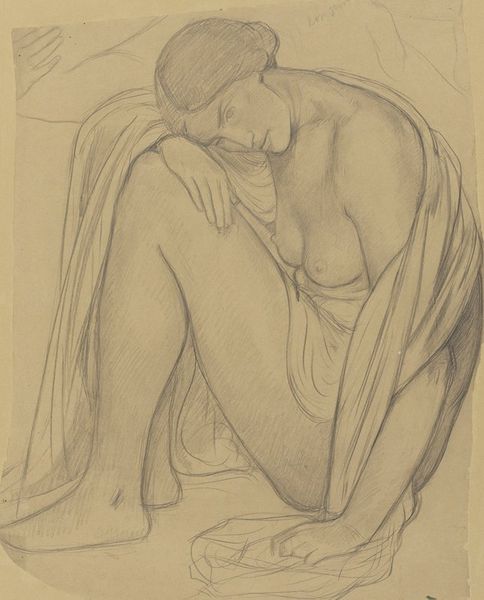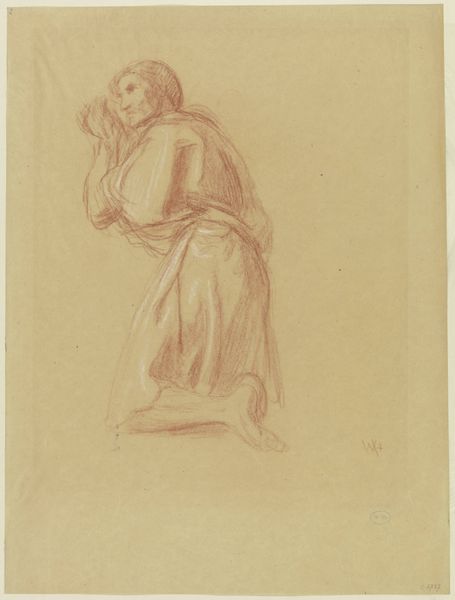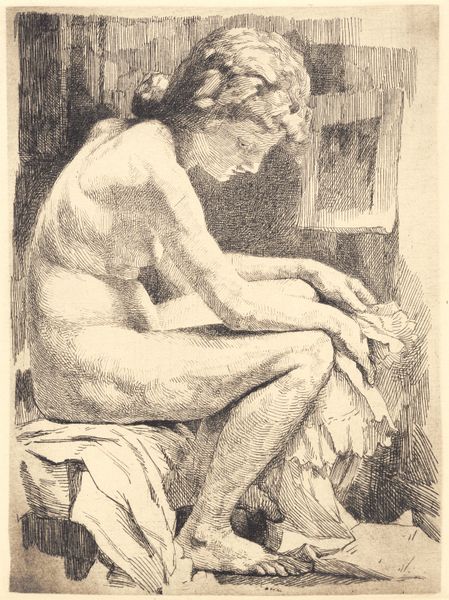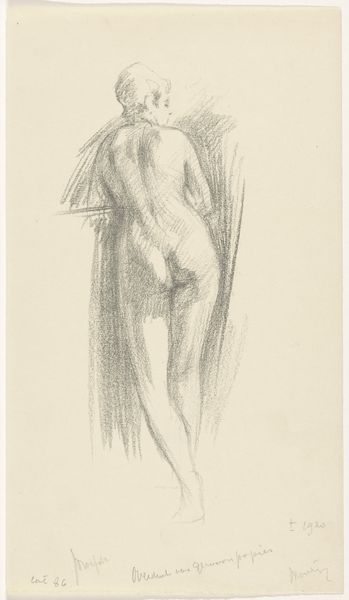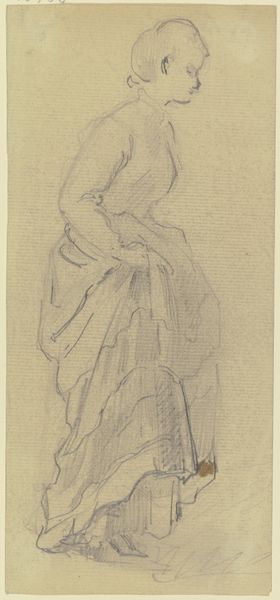
drawing, pencil, graphite
#
drawing
#
classical-realism
#
figuration
#
pencil drawing
#
ancient-mediterranean
#
pencil
#
graphite
#
history-painting
Dimensions: 199 mm (height) x 135 mm (width) (bladmaal)
Curator: This is "Studie efter attisk gravrelief," a pencil drawing dating back to the 1880s, by Joakim Skovgaard. It's currently held here at the SMK, the National Gallery of Denmark. Editor: Immediately, I'm struck by its somber elegance. The restrained use of line, the figures draped in classical garb – there's a real sense of melancholic grace about it. Curator: Indeed. It's a study, a copy of an Attic grave relief, which suggests Skovgaard was engaging with classical forms and themes, likely as part of his academic training or personal artistic development. The materiality of the drawing is interesting, too. He's using pencil and graphite – relatively accessible materials even in the 19th century. Editor: Precisely. The stark contrast between the permanence of the marble it’s copying and the ephemerality of pencil is noteworthy. I mean, observe how the hatching emphasizes the folds of the drapery, creating volume and shadow. It's a translation of form from one material language to another. Curator: Absolutely. And the choice of subject – a grave relief – speaks to broader cultural preoccupations with death, memory, and the idealization of the past. Was he drawn to its social context? What function did this sort of imagery fulfill within that historical milieu? Editor: Undoubtedly, its composition resonates on many levels, both the sitter and standing women each appearing to offer support or some act of mourning to each other, however, a clear read on these figures as stand-ins, perhaps, of how men view loss and the support a widow recieves in ancient Attica. Also, in studying this in pencil and graphite, we're also able to read the hand in translating marble sculpture from ancient times, that hearkens back even further in the mind. Curator: That brings us to think through the labor in replicating ancient art – how that fits into 19th-century artistic practice, academic standards, and artistic training? Editor: Yes, and how the artist shapes the composition and the meaning through careful manipulation of tone and line weight to elevate its form to meet that classical tradition, yet subtly hinting to their own influence. The image beckons our minds to ancient tragedy, however, subtly reshapes it through the immediacy of a contemporary pencil study. Curator: It’s compelling to examine the image, even a study like this, reveals much about the artistic practices and cultural values of its time. Editor: Agreed, both in terms of form and sociohistorical substance. A haunting, humble study on mortality, replicated throughout time, and a wonderful glimpse into Skovgaard’s artistry.
Comments
No comments
Be the first to comment and join the conversation on the ultimate creative platform.
